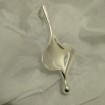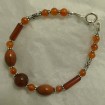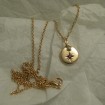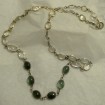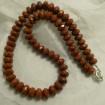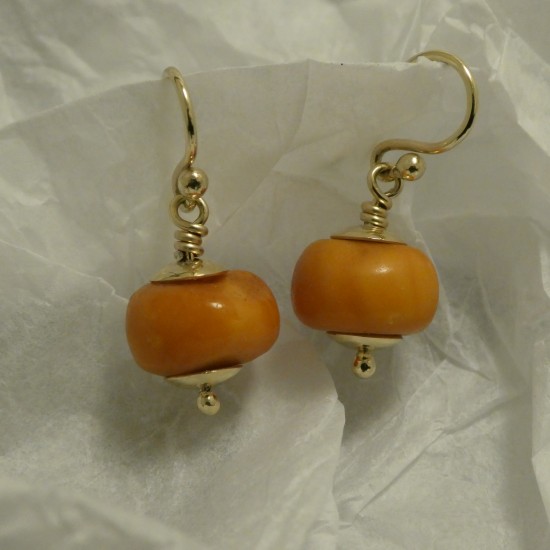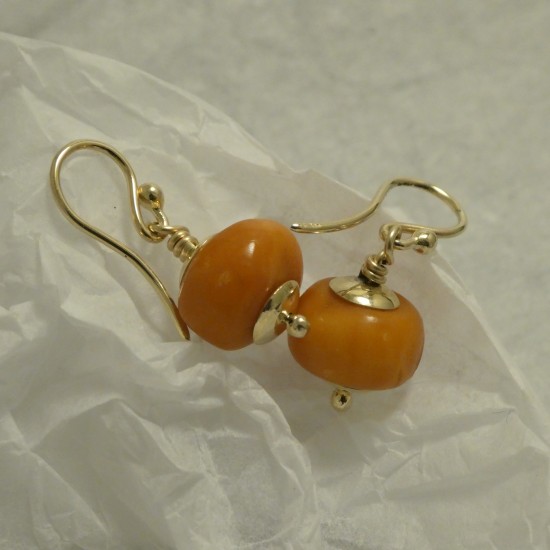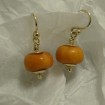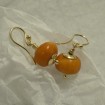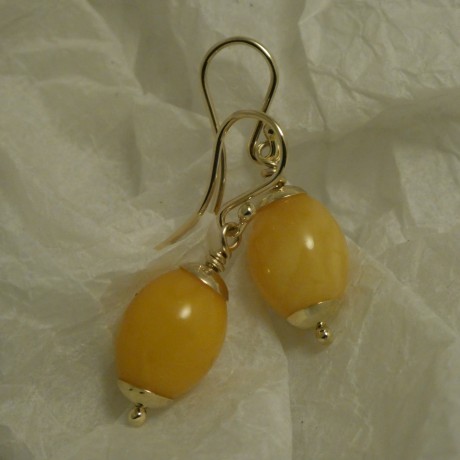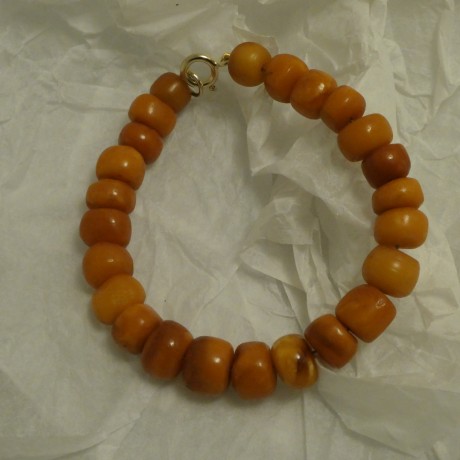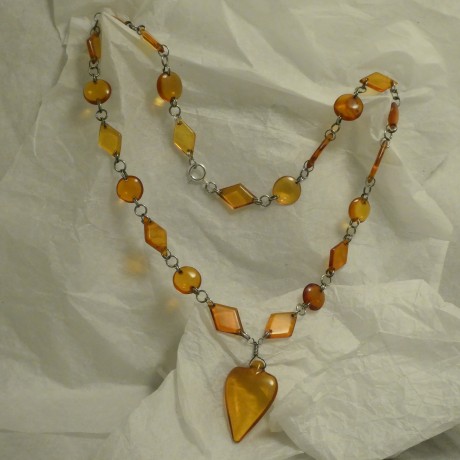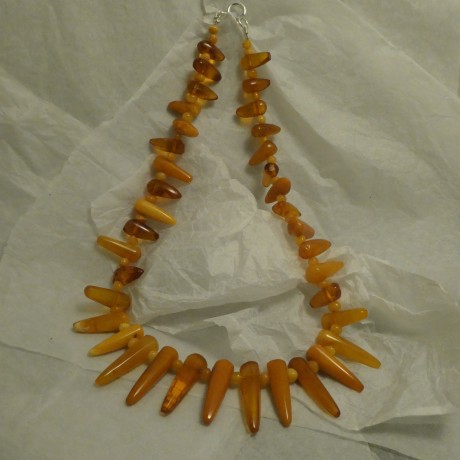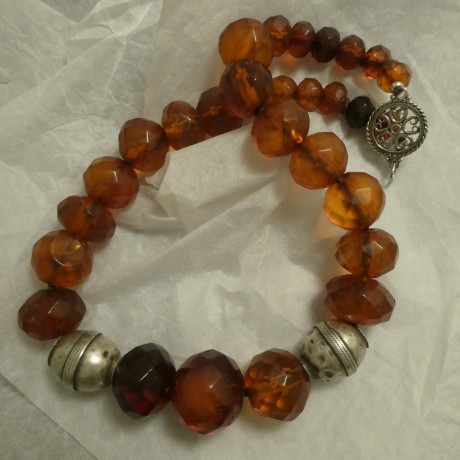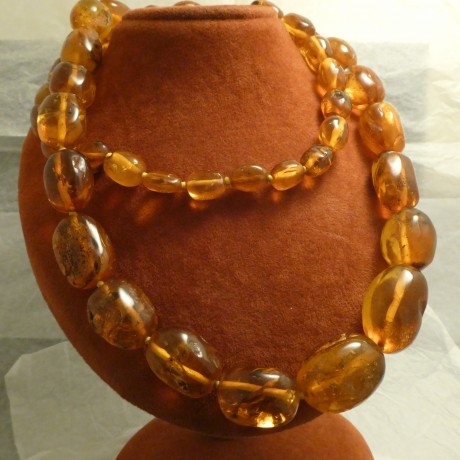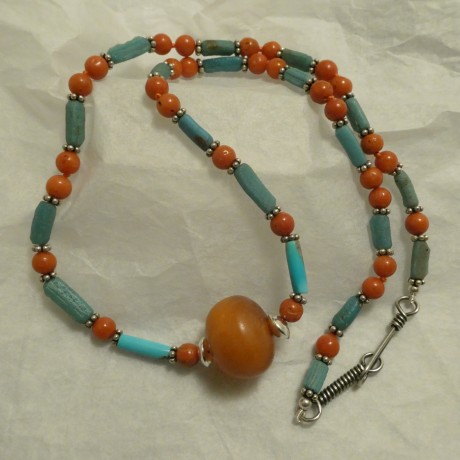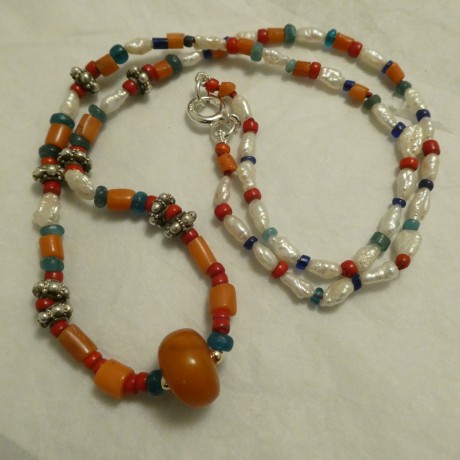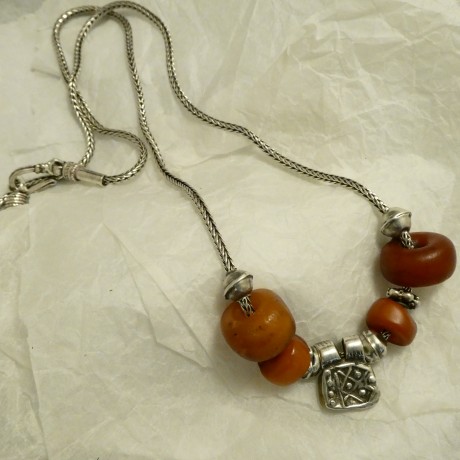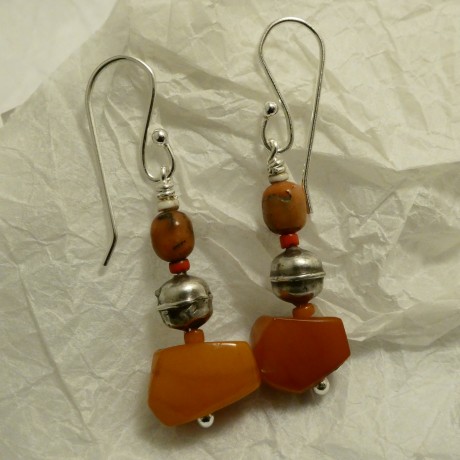Cutest Amber pair, old Tibetan. The most favoured Tibetan gemstone is Turquoise, mined since antiquity in Tibet itself. The gemstone quality Coral which Tibetans have used to pair with their favourite Turquoise would originally have been sourced through China, but the opaque yellow “butterscotch” Amber in the above earrings, of Northern European Baltic origin, would not have penetrated the fastnesses of the Himalayan Kingdom until the British traders of the British Raj, far to the south, managed, in the 1800s, to safely trek their way in.
Late to the scene though it was, the opaque yellow Baltic Amber was quickly adopted in Tibet, perhaps because in look and colour it worked so well with traditional saffron-coloured clothing, and certainly the yellow was one of the prime Tibetan colours, symbolizing earth and the concept of being grounded. The mixing of Turquoise, Coral and Yellow Amber is not uncommon in Tibetan malas, and as Turquoise, with age and wear will often take on a distinct green hue, there then are four of the five Tibetan sacred colours, the only absence being the colour White, which can often appear in these old malas in the form of beads of white conch.
There was a period in the second half of the 1900s when this type of old Tibetan yellow Amber bead was relatively plentiful, but for the last decades Tibetans and Chinese have been the greatest consumers of this particular gemstone, and it has now become rare and costly.
SOLD. Cutest Amber Pair, Old Tibetan
$455.00
SOLD. Cutest Amber pair, old handcut Tibetan yellow, or “butterscotch” Amber, nicely matched, originally from the Baltic Sea of Northern Europe, in lovely little earrings of 9ct Gold, all created and handcrafted in Sydney. (A large component of the cost of these earrings is in the 1.58 grams of 9ct Gold used; these eardrops have been created in mid 2024, and the cost of Gold is at an all-time high.)
25mm total eardrop length, the dimensions of the old Amber beads approx 11x7mm; very light in weight, being Amber.
See below further information on these cute, costly, fine and unusual eardrops.




